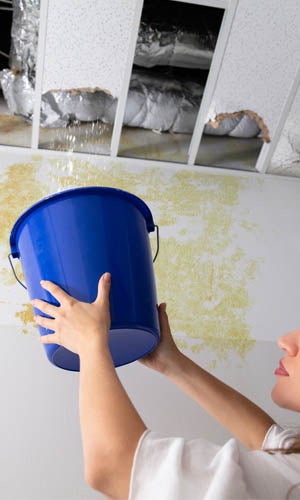Right here down the page you can get more professional material in regards to Detecting hidden plumbing leaks.

Early detection of dripping water lines can mitigate a prospective catastrophe. Besides conserving you money, it will reduce the worry and aggravation. The moment you discover a leak, calling your plumber for repairs is the best solution. Nonetheless, some tiny water leakages may not show up. Here are some hacks that assist if you can not discover it with your naked eyes.
1. Check Out the Water Meter
Inspecting it is a guaranteed means that aids you uncover leaks. If it relocates, that indicates a fast-moving leakage. This implies you may have a slow leak that could also be underground.
2. Check Water Consumption
Evaluate your water costs and also track your water usage. As the one paying it, you ought to see if there are any kind of discrepancies. If you detect sudden changes, despite your usage coinciding, it indicates that you have leakages in your plumbing system. Bear in mind, your water costs should fall under the very same variety monthly. An abrupt spike in your bill shows a fast-moving leak.
A constant boost every month, also with the exact same routines, reveals you have a slow leak that's likewise slowly intensifying. Call a plumber to thoroughly check your home, particularly if you feel a warm location on your flooring with piping beneath.
3. Do a Food Coloring Examination
30% comes from toilets when it comes to water usage. Test to see if they are running properly. Drop specks of food shade in the storage tank and wait 10 minutes. If the color somehow infiltrates your dish throughout that time without flushing, there's a leak in between the tank and also bowl.
4. Asses Exterior Lines
Do not fail to remember to check your outdoor water lines as well. Test faucets by connecting a garden pipe. Should water permeate out of the connection, you have a loosened rubber gasket. Replace this and also make sure all links are limited. If you have actually obtained a sprinkler system, it will certainly aid get it skillfully took a look at and also preserved each year. One tiny leak can squander lots of water and surge your water expense.
5. Inspect and Evaluate the Scenario
Home owners ought to make it a practice to check under the sink counters as well as also inside cabinets for any kind of bad odor or mold and mildew development. These two red flags indicate a leakage so punctual attention is called for. Doing regular evaluations, also bi-annually, can conserve you from a major issue.
Examine for stainings and compromising as many home appliances as well as pipelines have a life span. If you think dripping water lines in your plumbing system, don't wait for it to intensify.
Early detection of leaking water lines can reduce a potential disaster. Some little water leakages might not be noticeable. Inspecting it is a surefire method that helps you uncover leakages. One small leak can squander lots of water as well as increase your water expense.
If you suspect dripping water lines in your plumbing system, don't wait for it to rise.
WARNING SIGNS OF WATER LEAKAGE BEHIND THE WALL
PERSISTENT MUSTY ODORS
As water slowly drips from a leaky pipe inside the wall, flooring and sheetrock stay damp and develop an odor similar to wet cardboard. It generates a musty smell that can help you find hidden leaks.
MOLD IN UNUSUAL AREAS
Mold usually grows in wet areas like kitchens, baths and laundry rooms. If you spot the stuff on walls or baseboards in other rooms of the house, it’s a good indicator of undetected water leaks.
STAINS THAT GROW
When mold thrives around a leaky pipe, it sometimes takes hold on the inside surface of the affected wall. A growing stain on otherwise clean sheetrock is often your sign of a hidden plumbing problem.
PEELING OR BUBBLING WALLPAPER / PAINT
This clue is easy to miss in rooms that don’t get much use. When you see wallpaper separating along seams or paint bubbling or flaking off the wall, blame sheetrock that stays wet because of an undetected leak.
BUCKLED CEILINGS AND STAINED FLOORS
If ceilings or floors in bathrooms, kitchens or laundry areas develop structural problems, don’t rule out constant damp inside the walls. Wet sheetrock can affect adjacent framing, flooring and ceilings.
https://www.servicemasterbyzaba.com/blog/how-to-detect-water-leakage-in-walls/

I stumbled upon that review on Locating water leaks while surfing around the web. Are you aware of somebody else who is fascinated by the topic? Feel free to share it. Thanks so much for going through it.